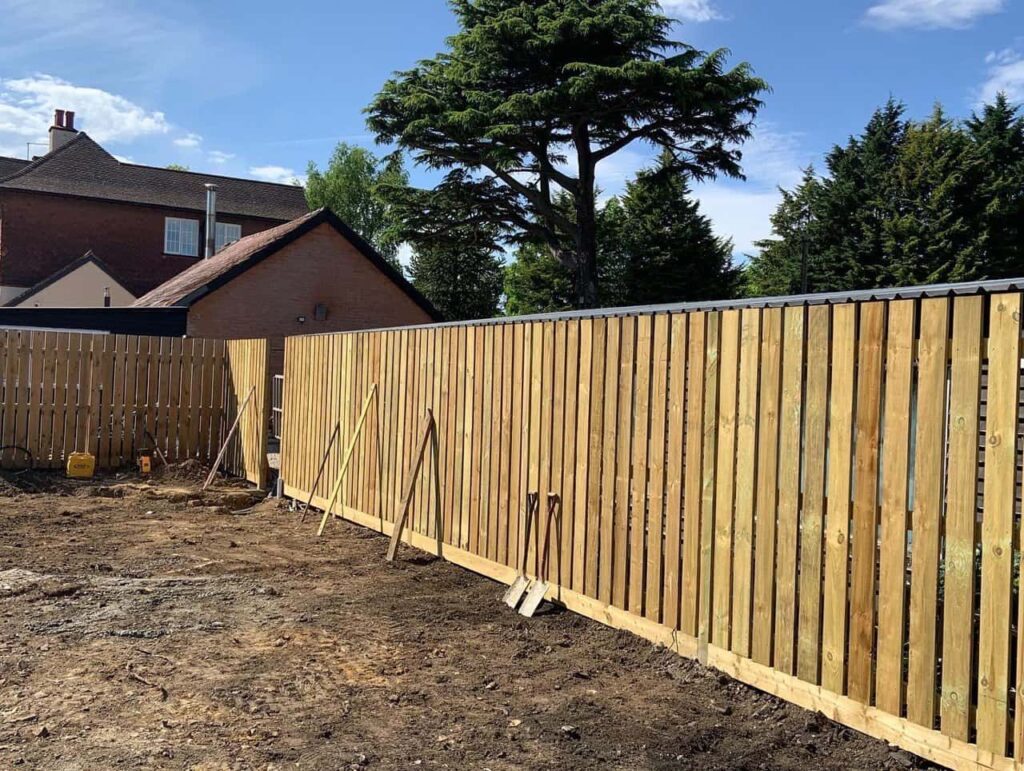Fixing Sagging Fences: Tips for Dealing with Shifting Soil
Sagging fences are a common problem, especially in areas with shifting soil or unstable ground. Over time, even the most well-constructed fences can start to lean or sag as the ground beneath them shifts, making your property boundaries look unsightly and potentially weakening the structure. At Fast Fix Fencing Rochester, located in Rochester, Kent, we understand the frustration that comes with sagging fences and the importance of addressing the issue promptly. In this blog post, we’ll explore why fences sag and offer professional tips for fixing sagging fences caused by shifting soil.
Why Do Fences Sag?
Several factors can contribute to a sagging fence, but shifting soil is one of the most common culprits. Here are some reasons why your fence may start to lean or sag:
- Shifting Soil and Erosion
Changes in the soil structure beneath the fence posts, often caused by erosion, heavy rains, or drought conditions, can cause the ground to shift, making fence posts unstable. If the soil is not compacted properly, the posts can begin to lean, leading to sagging sections of the fence. - Improper Installation
Fences that are installed without proper post depth or incorrect materials may be more prone to sagging. If the posts are not set deep enough into the ground or secured with concrete, they may start to move as the soil shifts. - Weather Conditions
Freezing and thawing cycles can cause soil expansion and contraction, leading to post movement. Prolonged exposure to wet weather can also cause wooden posts to weaken and rot, contributing to a sagging fence. - Heavy Loads on the Fence
Additional weight, such as vines or heavy winds pushing against the fence, can cause extra strain on the posts and panels, particularly if the soil beneath is unstable.
Tips for Fixing Sagging Fences Due to Shifting Soil
- Reinforce the Fence Posts One of the most effective ways to fix a sagging fence is by reinforcing the fence posts. If the posts have become loose due to shifting soil, they may need to be re-secured to ensure the fence stands upright. Here’s how to do it:
- Re-dig the Post Holes: Remove the affected fence posts and re-dig the holes, ensuring they are deep enough (typically 600mm or more) to provide adequate support. Deeper post holes are essential in areas with unstable soil.
- Add Gravel for Drainage: Before resetting the posts, add a layer of gravel at the bottom of the hole to improve drainage and reduce the risk of water pooling around the base of the posts, which can cause rot or shifting.
- Set the Posts in Concrete: Use concrete to secure the posts in place. This will provide a solid foundation, preventing future movement due to shifting soil. Allow the concrete to cure fully before reattaching the fence panels.
- Install Post Braces If you’re dealing with a sagging fence in an area prone to soil movement, installing post braces can help provide additional stability. Post braces are metal or wooden supports attached to the fence posts to help them stay upright. These can be especially useful for fences built on slopes or uneven terrain.
- Adjust the Fence Panels Sometimes, sagging occurs in the panels between posts rather than the posts themselves. If the panels are sagging, check the connections between the posts and panels to ensure they are secure. If necessary, re-tighten or replace any screws or brackets to lift the sagging section back into place.
- Replace Damaged or Rotten Posts In some cases, fence posts may be too damaged to repair, particularly if they have rotted due to prolonged exposure to moisture. If this is the case, replacing the damaged posts is the best solution. Use treated timber or durable metal posts to ensure the new posts are resistant to rot and more capable of withstanding shifting soil conditions.
- Improve Drainage Around the Fence Poor drainage can lead to water pooling around the fence posts, exacerbating soil erosion and increasing the likelihood of sagging. To improve drainage around your fence:
- Grade the ground so water flows away from the fence line.
- Consider installing a French drain or other drainage solutions to divert water away from the posts.
- Keep the area around the fence free from excess vegetation that may contribute to water retention.
The Importance of Regular Fence Maintenance
Preventative maintenance is key to keeping your fence in good condition, especially in areas with shifting soil. Regularly inspect your fence for signs of leaning, rot, or loose panels. Addressing minor issues early can prevent them from becoming larger problems down the line. At Fast Fix Fencing Rochester, we recommend scheduling routine maintenance checks to ensure your fence remains sturdy and safe.
Conclusion
A sagging fence is more than just an eyesore—it can weaken the overall structure and compromise the security of your property. By addressing the underlying issues caused by shifting soil and using the right repair techniques, you can restore your fence’s strength and appearance. At Fast Fix Fencing Rochester, we specialise in fixing sagging fences and providing expert solutions tailored to your property’s unique needs.
Call us on: 01634 568 991
Click here to find out more about Fast Fix Fencing Rochester
Click here to complete our contact form and see how we can help with your fencing needs.

